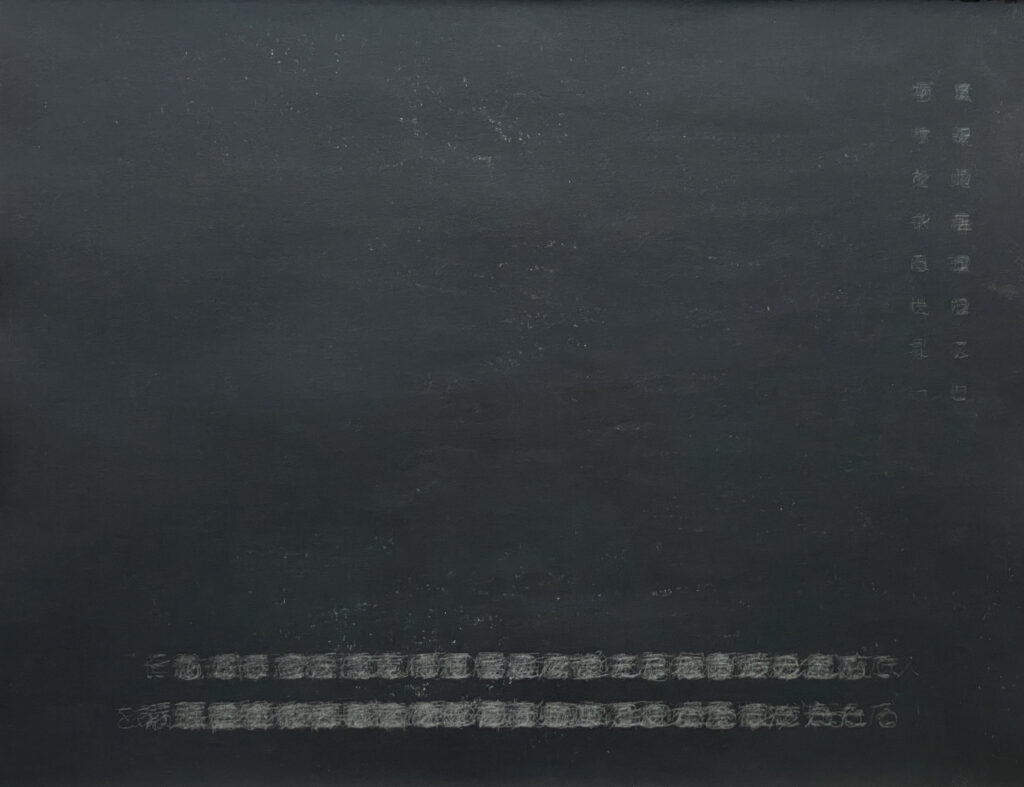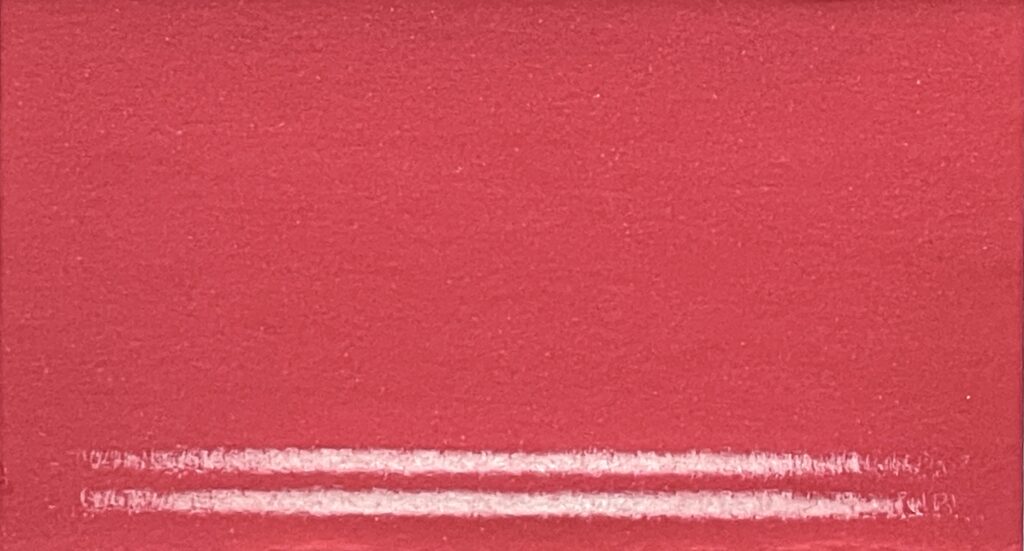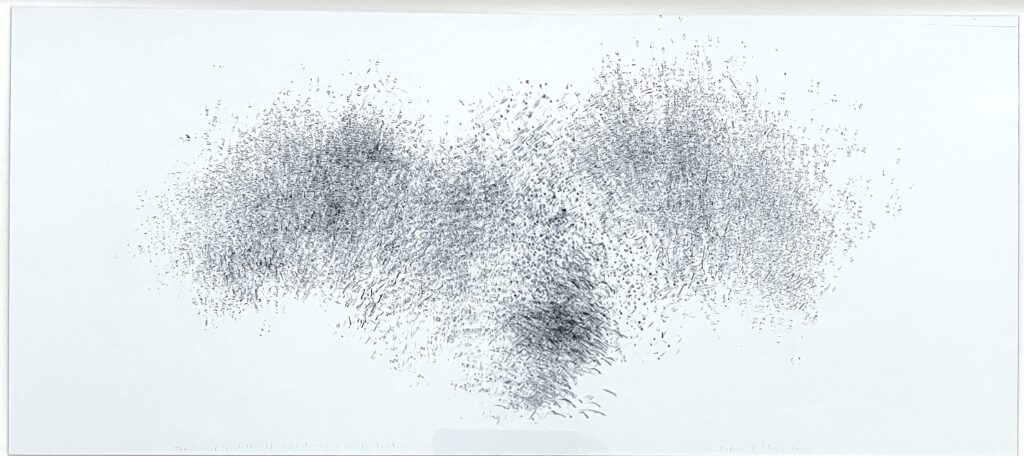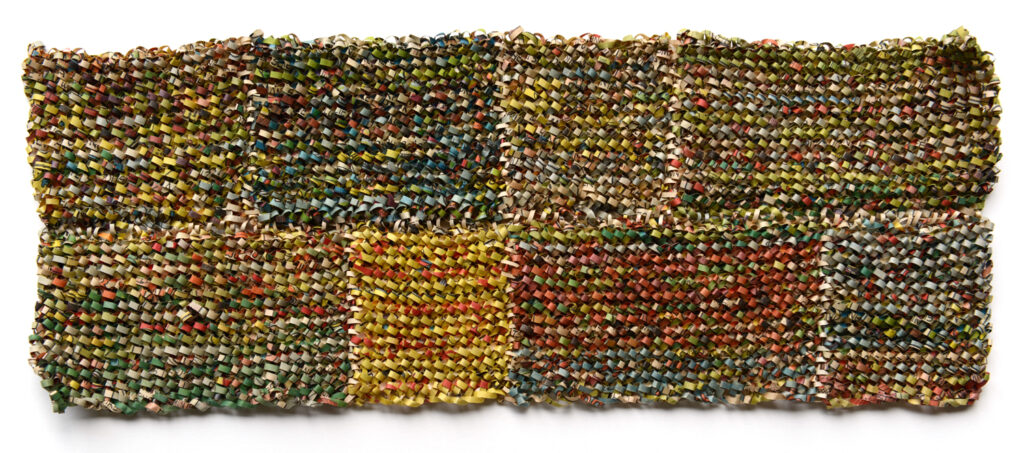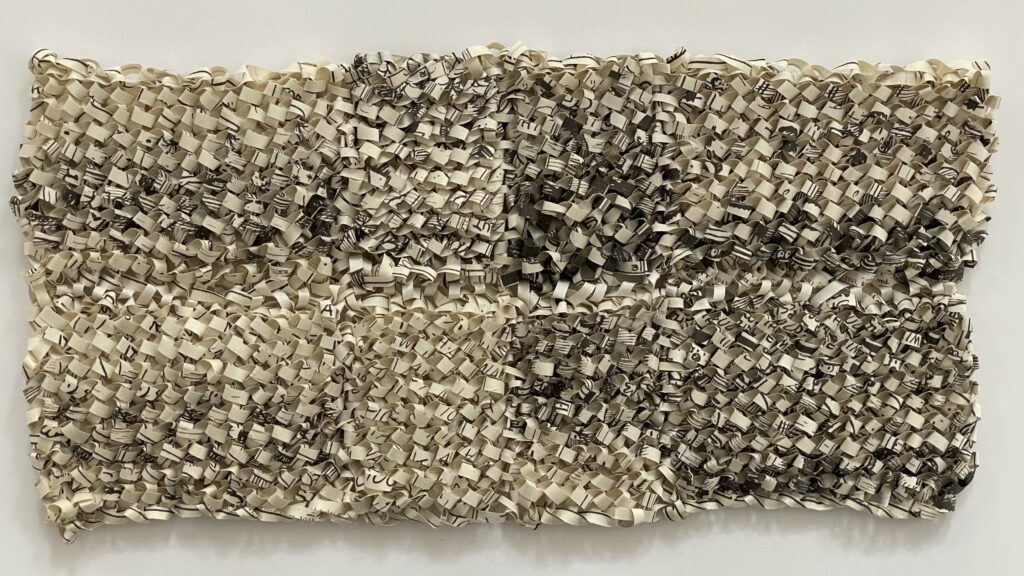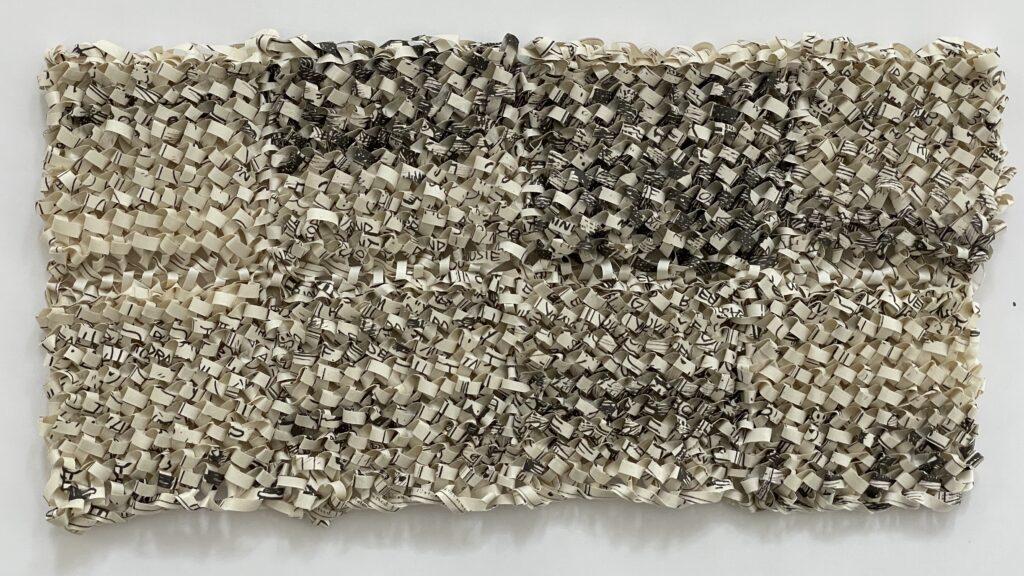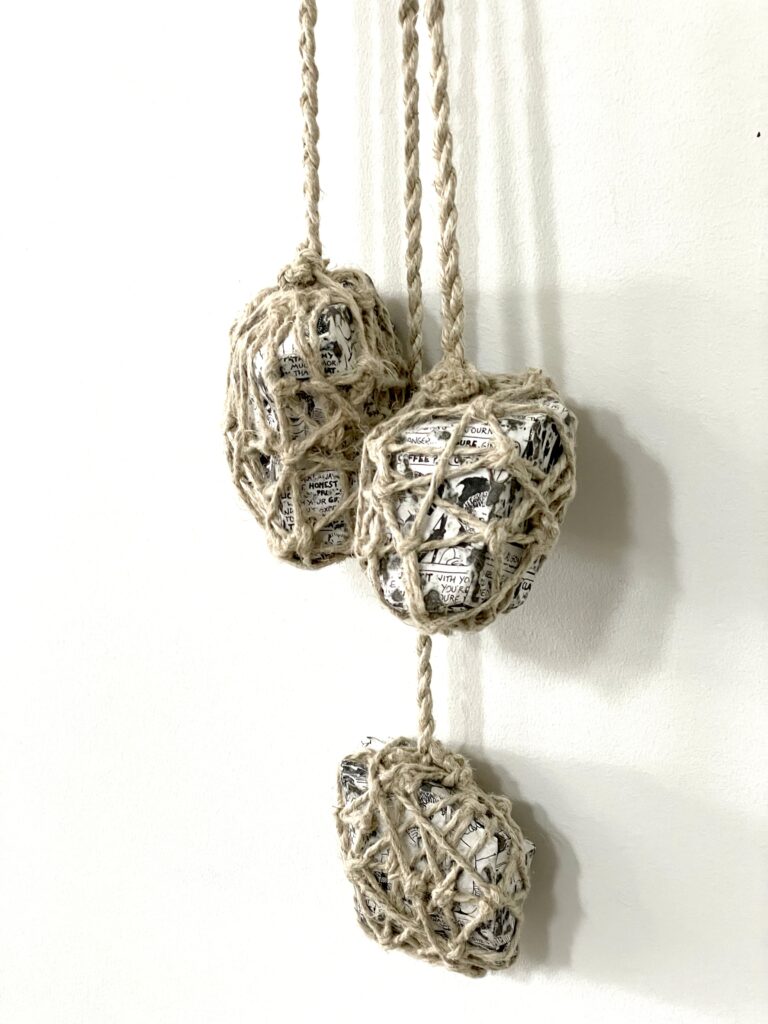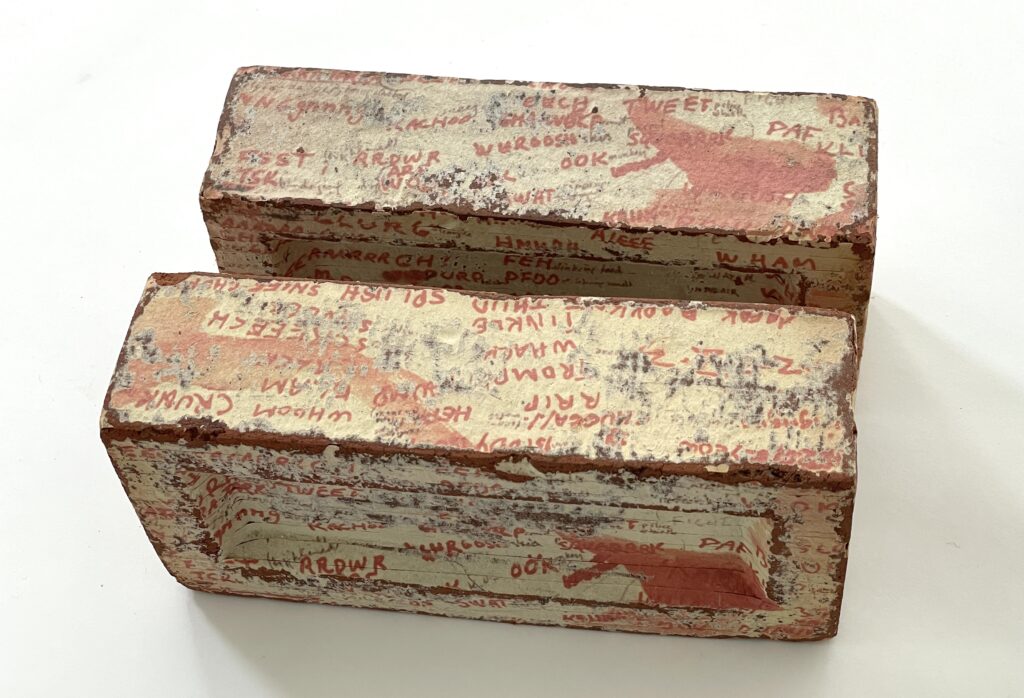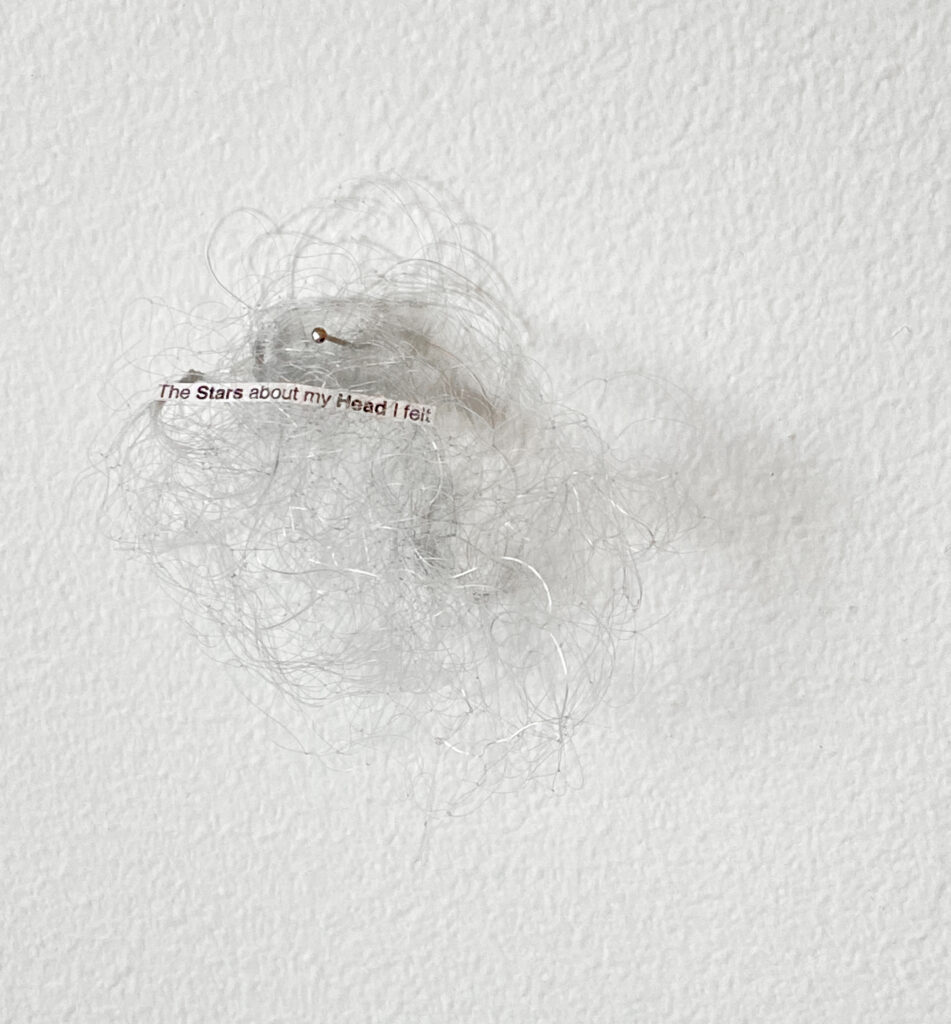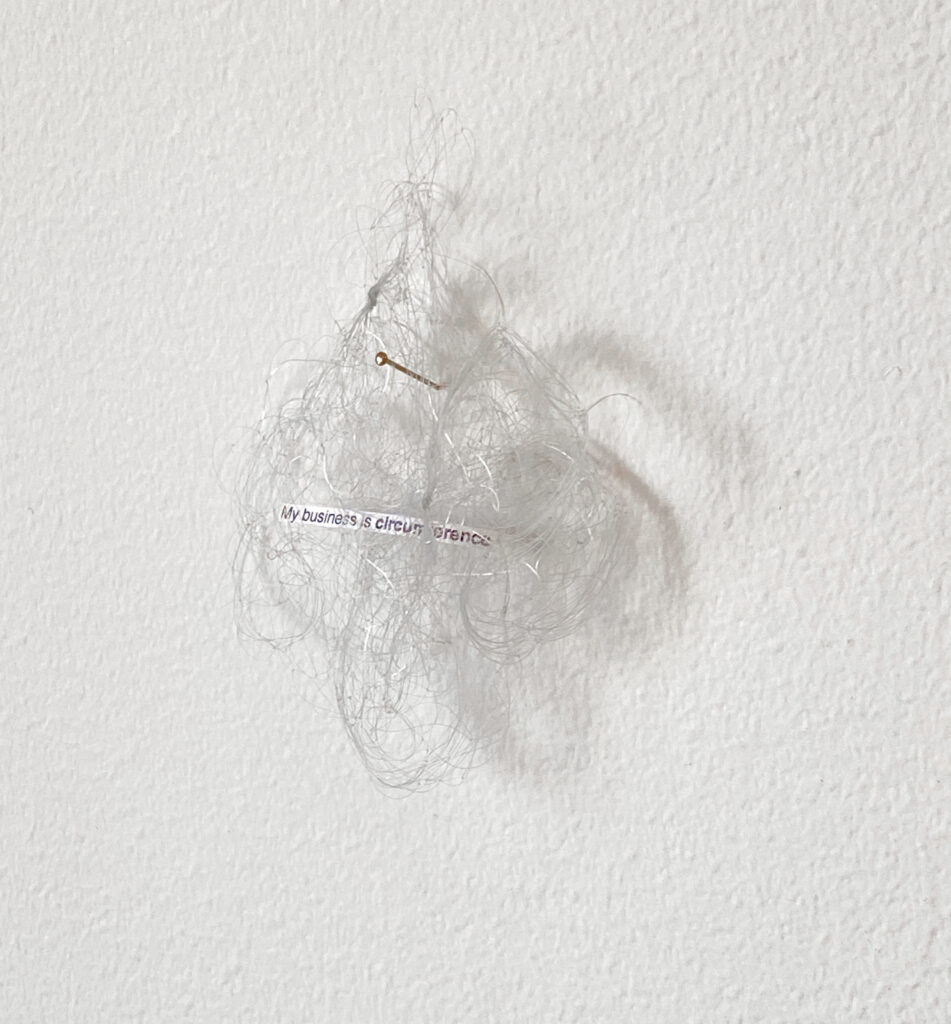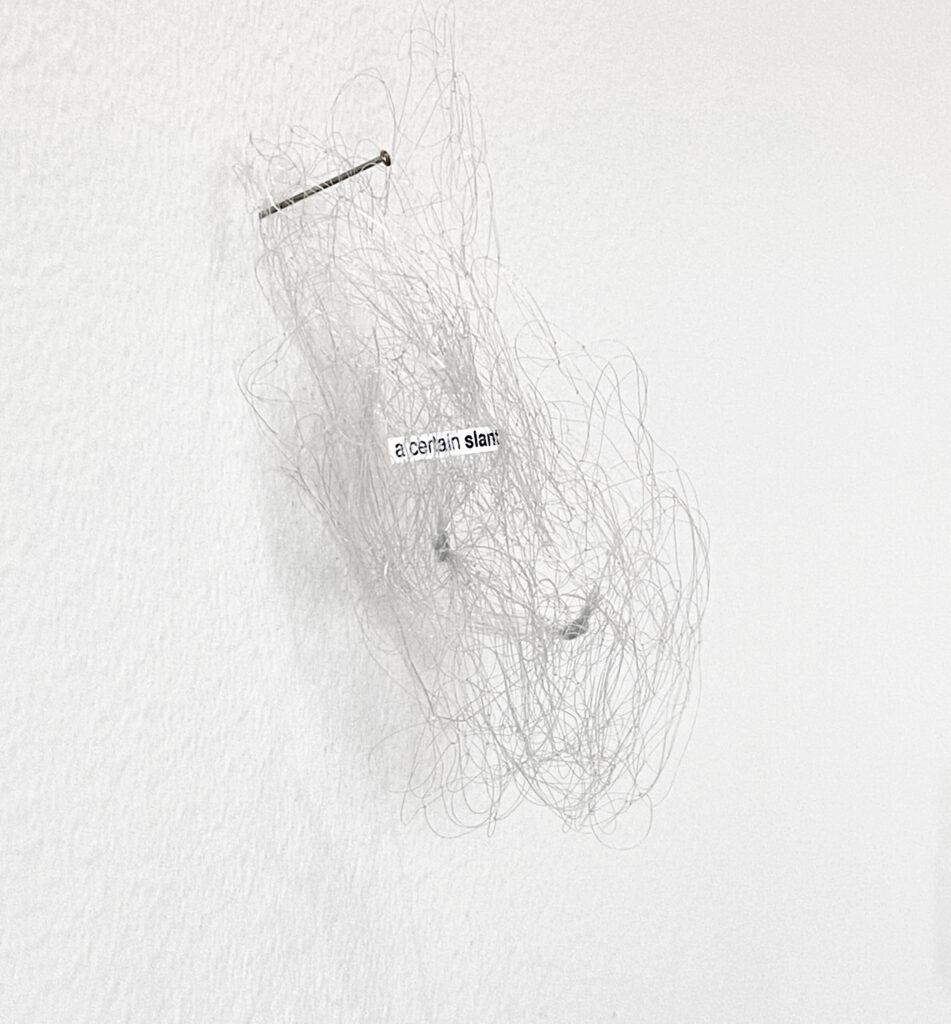Importance of Elsewhere
A Solo Exhibition by Stefana McClure
June 29 - Aug 3, 2024
Wed - Sat, 11am - 6pm
The Importance of Elsewhere is Stefana McClure’s first solo exhibition with Thomas Park. McClure’s work has been recognized for its meticulous craftsmanship and deep conceptual engagement with text and image. It delves into the nuances of linguistic and cultural translation, communication, and memory, often using techniques like erasing, redacting, and reconfiguring text to create complex visual narratives. Based in Newburgh, NY, she has been exploring various media, including works on paper, sculpture, and installations shown widely in the US and Europe.
<다른 곳의 중요성>은 토마스파크에서 열리는 스테파나 맥클루어의 첫 번째 개인전이다. 맥클루어의 작품은 정교한 기법과 텍스트와 이미지의 관계에 대한 깊이 있는 개념적 접근으로 알려졌다. 그녀는 언어와 문화의 번역, 소통, 기억의 미묘한 뉘앙스를 탐구하며 종종 텍스트를 지우고, 편집하고, 재구성하는 등의 기법을 통하여 흥미로운 시각적 내러티브를 만들어낸다. 업스테이트 뉴욕의 뉴버그에서 거주하며 활동하는 맥클루어는 드로잉, 조각, 설치 등 다양한 매체를 실험하며 미대륙과 유럽 등지에서 활발한 활동을 펼치고 있다.
In Stefana McClure's work, you almost always see printed letters, even when they are not so visible. For that reason, when I think of her work, a Chinese hieroglyph 文문 —means letter, character— comes to mind. What this letter stands for seems to be the primary subject matter of her work.
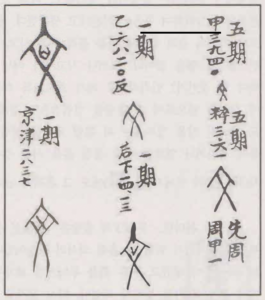
The Shape of Oracle Bone Script of 文(문)(Guo Moruo, 『卜辭通簒』)
First, let's talk briefly about this character. "文" is the character that makes up words like "文字character," “文學literature,” "文化culture," “文明civilization,” and “人文humanities." In the earliest etymological dictionary, Shuowenjiezi說文解字 or the Survey of Etymology, "文" means "to cross strokes; to form a crossed pattern." However, based on the oracle bone script, it is derived from a cut on a person's body or a 'tattoo.' According to Ha Youngsam, a Korean Chinese literary scholar who completed translating the entire volume of Shuowenjiezi into Korean, when people in ancient times died of natural causes, their chests were cut so as to bleed. It was probably a ritual that was caused by the association of bleeding with death. From this ritual, the word "文" came to mean "pattern, mark," and later "letter, character."
It's interesting to note that the character's origin was associated with its role of "a kind of door(문門, the same character with the same sound as 文 in Korean), or a gateway through which the soul exits." So the glyph "문文" originated at death, the point where the human body and soul "crossed over," and this juncture was marked by the act of "inscribing." This is where "문紋," (the same character with the same sound in Korean) meaning pattern, was later derived. Thus, we can say that a glyph文 is a gate門 and a pattern紋: a letter is a patterned inscription and a passage through which communication and cross-over occur. Rather than representing just a letter or language, Ha said, 문文 represents "traces of the activities of the human spirit."
*
In McClure’s work, subject matter often seems to work as material. Her practice consists of two-dimensional and three-dimensional works; instead of using paint or clay, she uses the traces of certain acts as the materials for the work. For example, erasing(or writing on top of each other) subtitles from a movie, overlapping typed texts, putting together the cuttings from actual books or newspapers, etc. In other words, her process involves performing repetitive physical acts on the text, shifting it from one mode to another.
For example, in her "Film on Paper" series, she writes the entire on-screen subtitles onto a single sheet of transfer paper, creating the effect of the ink on the transfer paper being erased. She says of her process as below:
“To make the drawings, I watch a film frame by frame, systematically inscribing all of the subtitles on top of one another on a ground of transfer paper. The process is subtractive: the surface of the paper is slowly eroded as successive layers of information are transferred off. Hours of translated dialogue are reduced to a ghost form, dense in the middle, fading towards the edges.”
In her series “Text into Image,” the drawings are created by people she hires. They wear special gloves with “IBM Selectric golfballs” at the end of each finger. These golfball elements can rotate freely, allowing each of the 88 characters an equal opportunity to be imprinted on the surface. As the text is 'typed' on the virtual keyboard by the typist's two hands, it reveals an image, which looks like a bird in flight. One’s imagination, freed by the act of reading, seems to take shape.
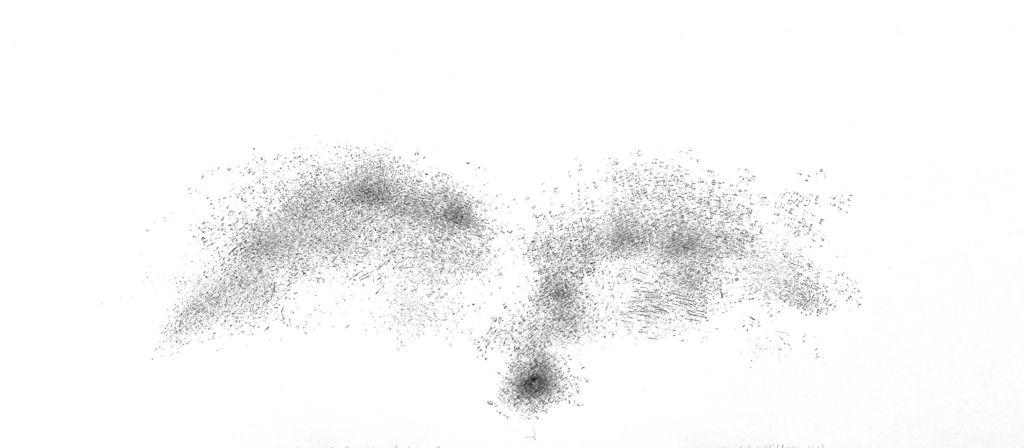
Stefana McClure, A Throw of the Dice Never Will Abolish Chance: a poem by Stéphane Mallarmé, 2006
For the “Reconstructed Books” series, McClure has included the two versions of Georges Perec's La Disparition. In this series, she deconstructs the book page by page, sentence by sentence, making them into long, thin ribbons that she then winds into a ball. This time-consuming and laborious process makes the book's contents disappear, like a ball of yarn, leaving a spherical form. In this exhibition, McClure has reconstructed the original book in French and the English translation side by side, like twins.
So, it seems that erasing text through repetitive action is the primary methodology in her process. Transferring the text from one medium to another is another important method for her, but ultimately, it seems to be a way to create “a trace, an image of erasure.”
A Piece of Monologue, one of McClure's "Text to Image" series included in the exhibition, is a short play by Samuel Beckett “typed" onto Teflon. The play begins with the line, “Birth was the death of him,” as an old man on the brink of death reflects on the length of his life, measuring it in "two and a half billion seconds (79 years)" or "thirty thousand nights (82 years)."
Normally, we add up our age by year based on the time we've spent since birth. But if we knew that our time in this world was, say, 80 years, and we count our age backward, we would be 80 at birth, 79 the next year, and so on. We can't "age down" due to the insurmountable fate of not knowing when we're going to die, but in fact, "aging up" and "aging down" are the same thing.
Seeing something means not seeing anything else. Living one’s life means not living anybody else’s life. Addition and subtraction, remembering and forgetting, and creation and destruction are happening in equal proportions, but our consciousness is always biased toward what we add and what we see.
McClure reminds us that the opposite is happening at the same time. There are things we don't see, places we haven't been, thoughts we haven't thought, lives we haven't lived, and other’s viewpoints.... McClure’s work is a meditation on all that is on the other side of the life we live, on the impossibility of it all, and the beautiful trace that dreams of elsewhere leave behind.
Mimi Park
스테파나 맥클루어의 작업에선 때로 희미하더라도 거의 언제나 글자들이 보인다. 그래서인지 난 그녀의 작품을 생각하면 문文이라는 상형문자가 떠오른다. 그리고 이 글자가 뜻하는 것이 그녀의 작품의 주요 소재인 듯하다.

우선 ‘문文’이라는 글자에 대해 간략하게 얘기해보자. ‘문文’은 ‘문자文字,’ ‘문학文學,’ ‘문화文化,’ ‘문명文明,’ ‘인문人文’ 등의 단어를 이루는 글자이다. 문文은 최초의 어원사전인 설문해자에서 “획을 교차시킨다는 뜻이며, 교차한 무늬를 형상화했다.”라고 나온다. 하지만 갑골문에 의하면 이 글자는 사람의 몸에 새긴 무늬, 즉 ‘문신’에서 그 의미가 유래한다. 한국에서 설문해자를 최초로 완역한 중문학자 하영삼에 따르면 고대의 사람들은 사람이 자연사했을 때 가슴팍에 피를 내어 그 죽음을 알렸는데, 피 흘림이 죽음이라는 연상 작용에서 기인한 일종의 의식이었을 거라고 추측한다. 피가 나오지 않을 경우에는 붉은 염료를 몸에 칠하거나 염료를 묻힌 흙을 시신 주위에 뿌리기도 했다. 이러한 의식에서 비롯해 문文이라는 글자는 ‘무늬’를 의미하게 되었고 나중에는 문자를 의미하게 된 것이다.
‘문文’이라는 글자의 시작이 “영혼이 빠져나가는 일종의 문(門 door, gateway)”의 역할과 관련되었다는 사실은 매우 흥미롭다. 이 글자는 인간의 몸과 영혼이 “교차하는” 지점, 즉 죽음에서 시작되었고, 이 지점은 무언가를 “새기는” 행위로 상징되었다. 여기서 나중에 무늬를 뜻하는 ‘문紋’자가 파생되었다. 이렇게 문文은 문門이고 문紋이다. 즉 ‘문文’이라는 글자는 무언가 들락거리는 통로이기도 하고 어딘가 새겨진 무늬이기도 하다. 하영삼은 이 글자가 단순히 문자나 언어를 뜻하기보단 "인간 정신 활동의 흔적”을 의미한다고 했다.
*
스테파나 맥클루어의 작업에서 소재는 종종 재료로 작용한다. 그녀는 평면과 입체 작업을 함께 하는데, 물감이나 흙을 재료로 사용하는 대신 어떤 흔적들 자체를 재료로 사용한다. 영화에 나온 자막을 지우는 흔적, 타자기의 활자판이 찍힌 자국, 실제 책이나 신문지를 자른 것 등을 이용해 작품을 만드는 것이다.
예를 들어 “종이 위 영화 Film on Paper” 연작에서 그녀는 영화의 장면마다 화면에 뜨는 자막 전체를 한 전사지에 베껴 쓰는 작업을 통해 전사지의 잉크가 지워지는 효과를 낸다. 그녀는 작업 과정에 대해 이렇게 말한다.
“이 드로잉 연작을 위해 나는 영화의 각 프레임들의 자막을 종이에 옮기고, 영화를 본 스크린과 같은 크기의 전사지 위에 영화의 모든 자막들을 차례로 새겨 넣는 방식을 취한다. 이 과정은 “지우기”의 방식으로 진행되며, 한 장 한 장 자막이 옮겨지면서 종이의 표면이 서서히 지워진다. 몇시간 분량의 자막은 마치 유령처럼 중앙은 밀도가 높고 가장자리로 갈수록 희미해지는 형태로 단순화된다.”
맥클루어의 다른 연작 ‘텍스트에서 이미지 Text into Image’ 연작은 그녀가 고용한 사람들이 IBM 셀렉트릭 골프볼을 덧붙여 개조한 특수 장갑을 끼고 가상 키보드에 ‘타이핑'하는 방식으로 만들어진다. 볼 타자기의 부분들은 자유롭게 회전하여 88개의 알파벳이 각각 비슷한 확률로 찍힐 수 있도록 한다. 텍스트는 타이피스트의 두 손으로 가상 키보드에 ‘타이핑’되면서 어떤 이미지를 드러내는데, 마치 날고 있는 새처럼 보인다. 책을 읽는 행위를 통해 자유로워진 상상력이 그 형태를 드러내는 듯하다.
이번 전시에 포함된 <재구성된 책> 연작으로 맥클루어는 조르쥬 페렉의 <실종> 프랑스어판과 영어 번역판을 포함시켰다. 그녀는 이 연작에서 책을 한 장 한 장 해체한 후 한 문장씩 가느다랗게 오려 실처럼 만든 후 이를 감아 공을 만든다. 끝도 없이 많은 시간과 노력이 드는 이 작업을 통해 책에 담긴 내용은 사라지고 마치 털실 뭉치처럼 구의 형태만 남게 된다. 이 전시에서 맥클루어는 원본과 번역본을 쌍둥이처럼 나란히 제작했다.
이렇게 보면 그녀의 작업에서 “반복적인 행위를 통해 텍스트 지우기”는 주요 방법론을 이룬다. 텍스트를 한 매체에서 다른 매체로 옮기는 것 또한 중요한 방법론이지만, 궁극적으로는 “지움의 무늬, 그 흔적”을 그리기 위한 방법인 듯하다.
“텍스트에서 이미지” 연작 중 <독백 한마디>는 베케트의 짧은 희곡 전체를 테플론 위에 “찍은” 작품이다. “출생이 그의 죽음이었다 Birth was the death of him”라는 대사로 시작하는 이 연극에선 죽음을 문턱에 둔 한 노인이 자신의 삶의 길이를 "25억 초(79년)“ 또는 "3만 밤(82년)“ 환산하며 삶을 조망한다.
우리는 태어난 이후 보낸 시간에 따라 일 년에 한 살씩 나이를 더한다. 하지만 만약 우리가 이 세상에서 살아갈 시간이 80년이라는 걸 알 수 있다면, 그리고 나이를 거꾸로 계산한다면 우리는 태어나는 순간 80살, 다음 해 79살 이런 식이 될 것이다. 우리는 죽는 시점을 알 수 없다는 극복할 수 없는 운명 때문에 “나이 줄이기”를 못할 뿐이지 사실 나이를 “먹는 것”과 살아갈 나이가 “줄어드는 것”과는 동일한 일이다.
무언가를 본다는 것은 다른 것은 보지 못한다는 의미이고, 하나의 삶을 산다는 것은 다른 삶은 살지 못한다는 것을 의미한다. 더하기와 빼기, 기억과 망각, 생성과 소멸이 같은 비율로 일어나고 있는데 우리의 의식은 언제나 더하는 것, 보이는 것에만 치우쳐 있다.
맥클루어의 작업은 그 반대의 작용이 동시에 일어나고 있다는 사실을 상기시켜 준다. 우리가 보지 못한 곳, 가보지 않은 장소, 생각하지 않은 생각, 살아보지 못한 삶, 그리고 타인의 관점…. 맥클루어의 작업은 우리가 경험하는 삶의 반대편에 있는 모든 것, 불가능함에 대한 명상이자, 다른 곳에 대한 꿈이 남기고 간 흔적이다.
박상미

